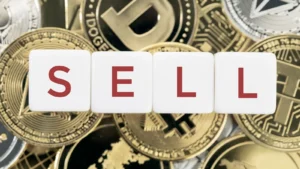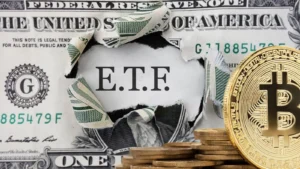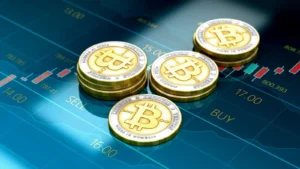Bitcoin is a digital currency that uses cryptography to control its creation and management. One of the most important aspects of Bitcoin is the block reward, which is how new bitcoins are created.
What is the Bitcoin Block Reward?
The Bitcoin Block Reward is a key component of the Bitcoin network. It rewards miners for verifying transactions and ensuring that new blocks are created and added to the existing blockchain.
Each time a miner successfully creates a new block, they are rewarded in newly minted Bitcoin. This reward acts as an incentive to miners, encouraging them to continue running their mining operations.
How does Bitcoin Block Reward works?
Bitcoin Block Reward system offers miners or “node operators” a reward every time they construct a new block. When a new block is created, miners are rewarded with a fixed amount of BTC, plus an additional amount determined by the transaction fees included in the block. Every 210,000 blocks mined (roughly every four years) the block reward gets halved until all 21 million bitcoin have been mined.
What is Block Reward made up of?
A Bitcoin block reward is typically composed of a combination of transaction fees and new coins created by the proof-of-work mechanism.
When miners create a new block on the blockchain, they are rewarded for their efforts with this block reward. The amount of the block reward can vary based on the currency being mined and the size of the transaction fees included in the calculation.
How is Block Reward paid?
Bitcoin block rewards are paid out as an incentive to incentivize miners and node operators to secure the network. The process works by rewarding participants for validating transactions on the network. The reward structure depends on the specific blockchain protocol, but typically block rewards consist of transaction fees as well as new coins generated for miners/node operators in each new block.
As more blocks are added, the mining incentives decrease over time until it reaches their issuance limit. This helps to control inflation and ensure that the rewards stay within reasonable limits so miners continue to participate in this distributed system.
What was the Bitcoin original block reward & What it is today?
Bitcoin (BTC) was created in 2009 by the mysterious Satoshi Nakamoto to provide a new type of digital currency revolutionary due to its decentralization and immutability.
On launch, the block reward for miners was 50 BTC per block; this was an amazing incentive for miners to move operations to BTC and helped spread the network quickly.
This amount has not changed since then but, because of Bitcoin’s deflationary nature as demand increases, it has decreased in value compared to other currencies.
What are block rewards used for?
This reward is essentially the incentive for miners to join the network, make secure transactions, and be rewarded with cryptocurrency rather than having to pay fees each time when they buy or sell cryptocurrency in Dubai or anywhere else.
It also serves as an important mechanism regulating the amount of cryptocurrency released into circulation at any given time. In addition to providing security and regulating currency supply, these rewards are typically also seen as an income source by many miners due to their potential substantial value.
How to create Block reward?
1. First you need a Bitcoin Wallet.
Getting started with bitcoins can be a bit daunting and requires a few basic steps. The first step is to create a Bitcoin wallet, which acts as a virtual bank account. A wallet is needed in order to hold the bitcoins you purchase or earn, as well as track any transactions you make.
You can think of it like an online version of your checkbook or your pocket wallet. Creating a Bitcoin wallet is free and quick, requiring only a few minutes of your time. And once you have your own wallet set up, the process of buying and selling bitcoins becomes much more straightforward.
2. Initiating a Bitcoin transaction & the network signature validation process
The Bitcoin network performs a signature validation process to confirm each transaction. This authentication procedure, similar to those of existing financial systems, involves digital signatures which authorize payments between users. To proceed successfully with a transaction, the digital signature must be strong and match up with the database held by the Bitcoin network.
This process ensures only legitimate transfers take place and helps avoid any double spending or fraud related to cryptocurrency transactions.
What happens when the Bitcoin reward is gone?
1.No new bitcoin will be added to the total number of bitcoin existence
When the Bitcoin reward is gone, there will be a dramatic shift in cryptocurrency. Without this reward, no new bitcoins can be added to the total number of bitcoin that currently exist. This means that miners, investors, and users will have to find alternate sources of income or profit. Many believe that these changes could cause some disruption in the market but could also lead to long-term stability for digital currencies, as exchanges and assets become more predictable and less volatile.
2. Effects on crypto-economics of the bitcoin
After this reward, there will be plenty of changes within the crypto-economy as miners transition from a financial incentive-based operation to one where transaction fees are their primary motivator. This shift could mean that smaller transactions become more expensive, or that miners focus on verifying larger transactions instead in order to maximize profits. Regardless of the changes, it’s clear that when the Bitcoin reward runs out it will create ripple effects throughout the entire crypto-economy.
The evolution of the Bitcoin mining industry
An ever-increasing number of miners have sought to capitalize on this new technological trend without relying on these rewards. This has led to strategic shifts out of pure proof-of-work (PoW) methodologies and into more sophisticated strategies such as cloud-based setups and ASICs that allow for significant cost savings and increased efficiency.
As these approaches have become more common, many miners are now incentivized to participate in the Bitcoin ecosystem even without receiving block rewards – a clear indication of how much the crypto landscape has changed since its inception.
The Future of Bitcoin Block Reward
The future of Bitcoin block reward is incredibly exciting. As the world’s first cryptocurrency, its success has propelled an ever-growing interest in blockchain and digital currency as a whole. What is sure to capture the attention of the crypto world is the new dynamic that is occurring with Bitcoin’s block reward.
Historically, those who validate and secure transactions via the blockchain have been rewarded with tokens, however, in the post-halving events this reward will be cut in half which opens a new dimension of opportunity for others to capitalize on.









